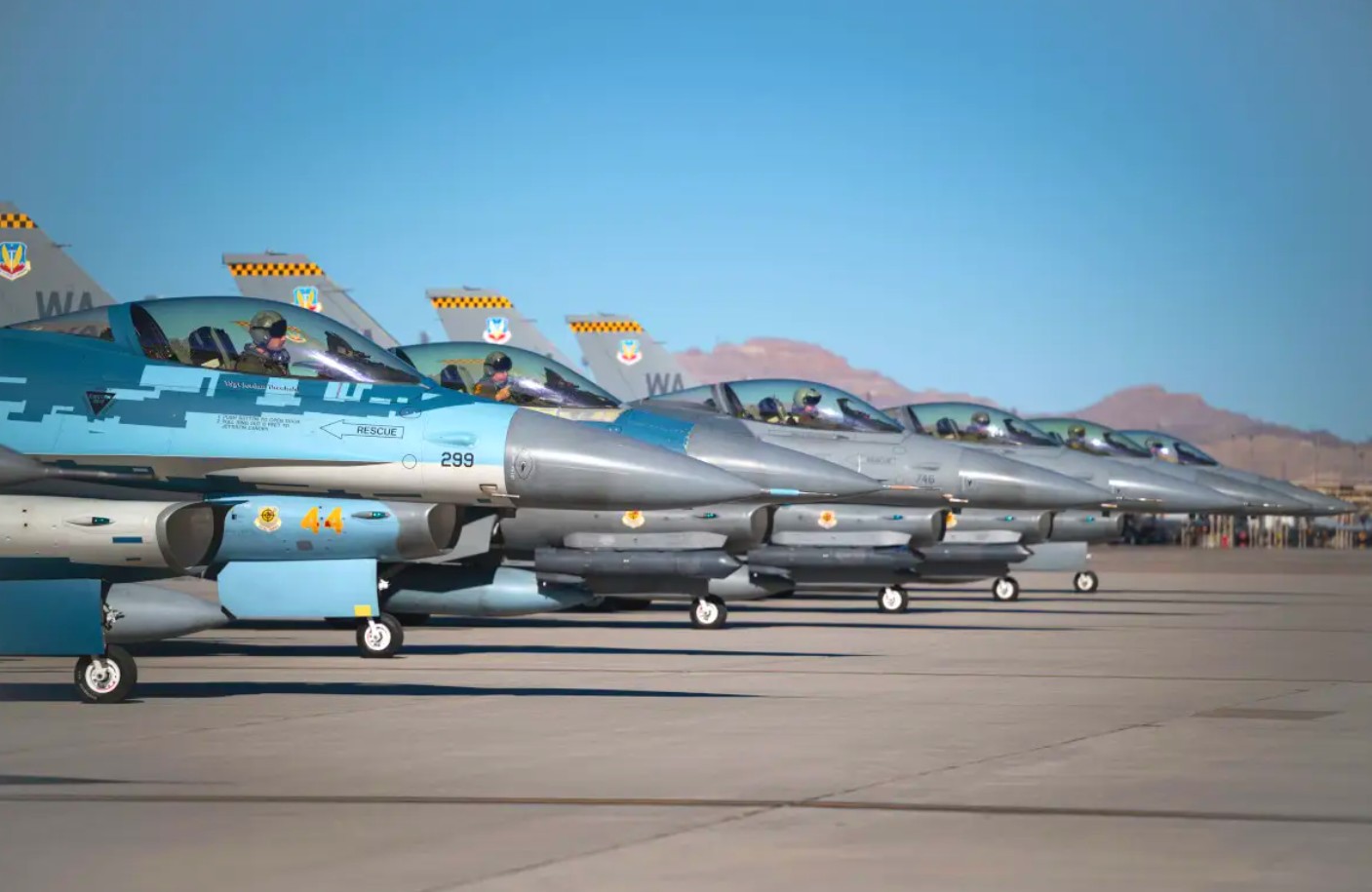Taiwan was shaken up by a 7.2-magnitude tremor on April 3 —the most powerful earthquake in 25 years. As the nation grapples with the aftermath of the seismic event, the Republic of China Air Force (ROCAF) finds itself undertaking a crucial mission: assessing the impact on its military assets, notably its fleet of F-16 fighters.
Russia Stunned By NASA’s Role In Ukraine War; Claims Tech From Mars Mission Found In Ukrainian UAVs
An earthquake struck off the coast of Hualien, on the island’s eastern seaboard, at 7:58 AM local time on April 3. The tremor claimed nine lives and injured over 900 individuals.
Television broadcasts showcased the extent of the devastation, with images of buildings tilting and infrastructure damage in the rugged, thinly populated eastern region of Hualien.
Reports emerging from Hualien Air Base, located near the quake’s epicenter, indicate that some of the upgraded F-16 fighters sustained damage.
Reuters confirmed that Taiwan’s air force said six F-16 fighter jets had suffered slight damage at the base. However, conflicting reports suggested that the number of affected F-16 Vipers could be higher, with alternative sources indicating eight aircraft were impacted.
The Air Force Command said that the affected aircraft sustained minor scratches and damage primarily due to the shaking and movement of the boarding ladder.
It was clarified that the damage was limited to small parts and did not impact the airframe. Immediate replacement and repair efforts were undertaken to restore the combat readiness of the affected fighters to ensure that they remained unaffected operationally.
Although the Air Force Command did not divulge whether any other assets or infrastructure at Hualien Air Base were affected, some accounts indicated that the earthquake caused cracks in the walls of the bunker, hangar, and barracks in several areas.
Hualien Air Base, which serves as the home of the 5th Tactical Composite Wing of the ROCAF and is equipped with F-16V and F-5 aircraft, has a crucial role in responding to potential incursions by Chinese military aircraft.
The frequency of scrambles from the base has increased in recent times due to Beijing’s escalating military activities around Taiwan, thereby imposing a significant and enduring strain on Taiwanese pilots and aircraft.
Due to its strategic significance, Taiwan has been aiming to strengthen the defenses of Hualien Air Base to enhance its resilience against potential missile strikes from the Chinese People’s Liberation Army (PLA).
In February, Taiwan’s defense ministry allocated over US$20 million to expand the runway at Hualien Air Base, situated on the eastern side of the island.
This initiative marked the initial phase of a broader project to establish minimum operating strips (MOS) at various bases throughout Taiwan in anticipation of potential attacks.

Taiwan’s F-16 Vipers
The F-16 Viper is the newest version of the well-proven F-16 fighter jet, and Taiwan was notably the first nation to field operational F-16Vs.
In February 2024, Taiwan marked a key milestone with the conclusion of its Peace Phoenix Rising initiative. This endeavor, backed by a substantial investment of $4.5 billion, was aimed at modernizing a fleet of 139 older F-16 models. Through meticulous upgrades, these aircraft were transformed into the highly advanced Block 70/72 Viper configuration.
Despite being a fourth-generation fighter, the enhanced F-16V presents a myriad of advanced features courtesy of its upgraded avionics suite.
Central to the enhancement of these formidable aircraft is the integration of cutting-edge technology, prominently featuring the Northrop Grumman AN/APG-83 Scalable Agile Beam Radar (SABR) with its active electronically scanned array (AESA).
This state-of-the-art radar system extends detection and engagement ranges, which heightens Taiwan’s capability to identify and neutralize potential threats, including elusive targets like cruise missiles.
:quality(70)/cloudfront-us-east-1.images.arcpublishing.com/archetype/QEG22B73GVBHFNXN2EPQXEHZK4.jpg)
The upgraded F-16V fleet also boasts of increased versatility in its armament, with provisions for heavy weapon payloads. Among these armaments are the AGM-84 Harpoon missile, known for its effectiveness in anti-shipping missions, alongside sophisticated weaponry like the AGM-88 High-Speed Anti-Radiation (HARM) missile for defense suppression and the AGM-154 Joint Stand-Off Weapon (JSOW) for precision strikes.
The Taiwanese Air Force is also acquiring 66 new F-16 Block 70/72 Viper fighter jets to augment its operational fleet. The new aircraft are designated for deployment to the 7th Tactical Fighter Wing stationed at Taitung Air Base. However, this procurement program faces delays attributed to logistical and financial constraints.
- Contact the author at ashishmichel(at)gmail.com
- Follow EurAsian Times on Google News




